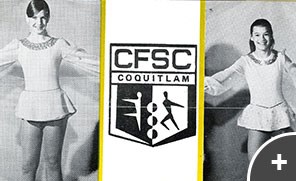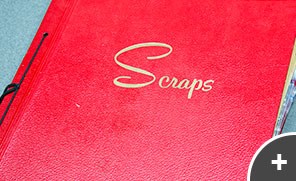Long before Facebook, Instagram and Pinterest — or even selfies — photos of individuals and groups as well as mementoes and newspaper clippings were tucked safely away into scrapbooks.
These “diaries” often told the stories of achievement and relayed a social side of the owner or organization that could only be captured from the compiler’s point of view.
The keepsake albums were, in essence, personal time capsules — a much different format from the social media platforms we present our images on today for the world to see.
Last week, to coincide with National Heritage Day, the city of Coquitlam unveiled its latest online exhibit to highlight five of its 10 vintage scrapbooks in the archive collection. And among them are scenes from:
• the building of the Coquitlam Dam (circa 1912-’13, a scrapbook donated by a resident from the eastern U.S. who discovered the album in her grandmother’s possessions, which had been in her aunt’s attic since 1945);
• Coquitlam Figure Skating Club (1968-’80) showing portraits of young skaters, pictures of carnivals at the Coquitlam Sports Centre, newspaper articles and ribbons);
• Coquitlam Satellites (1974-’79, an album donated by Jim Hinds, the manager of the women’s hockey team from 1971 to ’82);
• Mountain View School (1979, containing news clippings and photos of former students and teachers — likely made up for the Golden Homecoming celebration);
• and Imperial Order of the Daughters of the Empire (circa 1971, a scrapbook donated by the Centennial chapter that was established in the Harbour Chines neighbourhood of Coquitlam in 1958).
City archivist Emily Lonie said the scrapbooks “offer a very particular perspective” of what was happening with the organizations at the time.
For the Satellites, for example, its scrapbook “gives a lot of colour to the history. We can have minutes and records but seeing the photos and ribbons can bring it to life. It offers a deeper connection.”
Still, the way the historical objects were handled was not always done in the same fashion.
Though they are in relatively good condition, the photos from the 100-year-old Coquitlam Dam album are “silver mirroring,” meaning they have a blue tint because they’ve been exposed to humidity.
The memory books from the 1970s and 1980s have other challenges, too.
During that time, magnetic albums were popular but the photos were hard to peel off because they stuck to the page, under the plastic flap. The pages also turned yellow.
As part of the display, Lonie makes a number of recommendations to keep vintage scrapbooks in tact and organized for future generations.
She suggests they be kept in a cool, dry and dark place; be stored flat; that acid-free paper and photo corners be used (avoiding tape and glue); and that captions be written (names, places and dates).
“You can make your future archivist very happy if you follow these steps,” Lonie said.
As well, Lonie offers a four online links for conservation — one of which includes a tutorial from sustainableheritagenetwork.org.
While Lonie isn’t against social media for digital archiving, she said scrapbooks offer a tangible longevity. “There’s something about photos being printed out on archival paper that adds context to the story,” she said. “Today, we take thousands of photos but taking the time to preserve them in a single album gives meaning.”
• To view Scrapbooks – Fragile Time Capsules, go to coquitlam.ca/archives.




